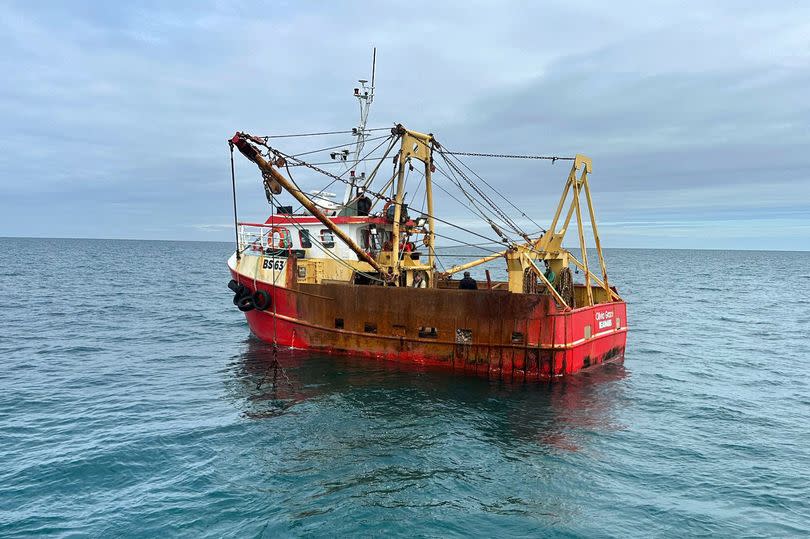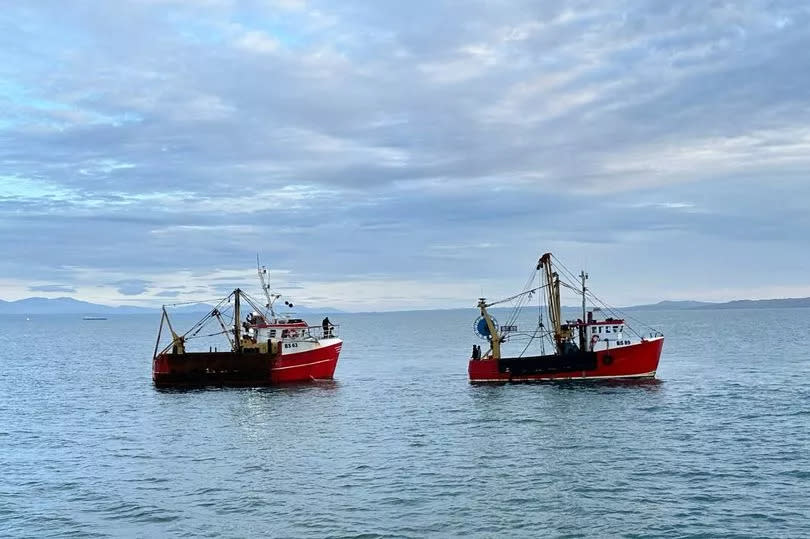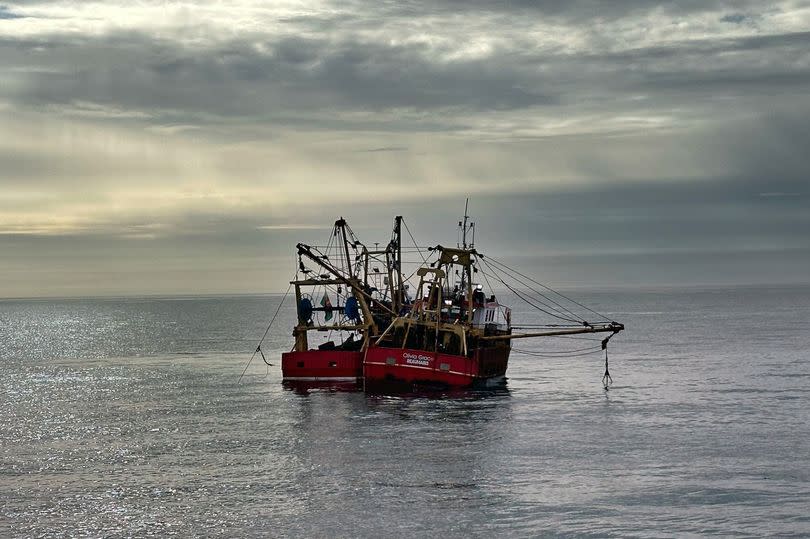Reason why RNLI declined to give stricken trawler a tow to port except as last resort

A disabled scallop trawler was forced to jettison its fishing gear as it drifted towards shipping lanes off Anglesey. An all-weather lifeboat (ALB) from Moelfre put to sea for eight hours after answering an emergency call for from the trawler.
The 14-metre vessel found itself at the mercy of the currents after suffering a mechanical failure around 12 miles north of Puffin Island. Concerned about posing a risk to ships, its crew issued a Pan Pan call – a request for urgent help while not being in immediate danger.
As no other ships in the area could assist, Holyhead Coastguard dispatched RNLI Moelfre ALB at 12.35pm on Sunday, April 21. It was on scene in 25 minutes, with the west-drifting trawler requesting a tow back to Port Penrhyn in Bangor, Gwynedd.
READ MORE : Headteacher Neil Foden 'abused five children' and had 'bizarre sexual fetish', court hears
READ MORE: Lifting gear brought in as 'last resort' to free girl trapped on North Wales beach as tide comes in
This was denied as the vessel was deemed to be a “commercial tow", for which specialist equipment was needed. RNLI Moelfre said there was no immediate threat to the trawler crew - and any attempt by the lifeboat to establish a tow might endanger its own volunteers and their boat.
The RNLI crew discovered the vessel’s derricks (lifting gear) were stuck down and its scallop dredges were hanging some five meters beneath the surface. These are heavy-duty metal framed nets that are pulled over the seabed to harvest scallops.
An RNLI Moelfre spokesperson said: “The ALB and crew stood by while the crew made several attempts to recover the fishing gear manually. Unfortunately, due to the sheer weight of the equipment, attempts to recover the dredges and stow the beams were unsuccessful. With the vessel in its current state and with the risk of fouling its gear on the seabed, towing to its home port of Porth Penrhyn was not feasible.”
An RNLI member was transferred to the trawler and they asked the vessel to jettison its fishing gear. This request was rejected as the trawler crew lacked cutting equipment to separate wires from the winches. Neither did the crew have buoys to mark the abandoned dredges so these could be recovered later. Sign up now for the latest news on the North Wales Live Whatsapp community

The lifeboat agreed to stand by and provide safety cover while commercial recovery options were discussed. RNLI Moelfre agreed to connect a tow if the trawler was at risk of drifting into danger. As they waited, the RNLI crew were in for a surprise.
Although there was no response from the coastguard’s Pan Pan call, it was later discovered that the scalloper’s sister vessel was also working in the area,” said a spokesperson. “The (trawler’s) owner later instructed the sister vessel – another 15-metre scalloper – to provide support and assistance.
“Once it arrived, they transferred some lifting equipment over with ropes and buoys to jettison the dredge. Following several hours of work, the fishing gear was lowered to the seabed.
“The sister vessel connected a tow while the crew of the trawler began work to manually recover the beams/derricks on their way back to Porth Penrhyn. Once safely underway, the coastguard released the lifeboat and crew after eight hours at sea.”

After the incident, RNLI Moelfre explained why it was reluctant to use its lifeboat to tow the stricken trawler. “Although this vessel needed assistance, there was no immediate risk to life,” said the spokesperson.
“The RNLI will always offer to assist or provide safety support where required. Still, with the risk of damaging the lifeboat or injuring the crew and following a full towing assessment, lifeboats cannot/will not venture into commercial towing or salvage work.
“We work closely with our colleagues in the Coastguard and casualty vessels and their owners to offer support and advice and, more importantly, ensure the safest resolution is achieved.” Get the the latest Anglesey stories via our newsletter - sent every Friday
Find out what's going on near you

 Yahoo News
Yahoo News 
